Themed collection Small molecules for chemical biology

Targeting the RNA demethylase FTO for cancer therapy
Chemical modulation of the RNA m6A demethylase FTO for cancer therapy.

RSC Chem. Biol., 2021,2, 1352-1369
https://doi.org/10.1039/D1CB00075F
Wnt signaling activation: targets and therapeutic opportunities for stem cell therapy and regenerative medicine
Overview of the Wnt signaling pathway and targets of Wnt activators.

RSC Chem. Biol., 2021,2, 1144-1157
https://doi.org/10.1039/D1CB00063B
Natural Trojan horse inhibitors of aminoacyl-tRNA synthetases
The structures, biosynthesis, and modes of action of albomycin, microcin C and agrocin 84, antibiotics targeting aminoacyl-tRNA synthetases, are reviewed. Using bioinformatics several new putative aminoacyl-tRNA synthetase inhibitors are predicted.
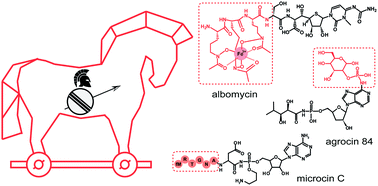
RSC Chem. Biol., 2021,2, 468-485
https://doi.org/10.1039/D0CB00208A
Biological functions of supramolecular assemblies of small molecules in the cellular environment
Supramolecular assemblies of small molecules, exhibiting emergent properties, are becoming a new and dynamic molecular platform for biological functions and for developing novel therapeutic approaches.
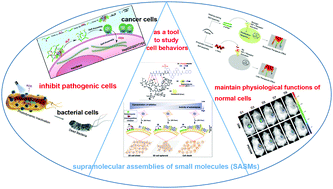
RSC Chem. Biol., 2021,2, 289-305
https://doi.org/10.1039/D0CB00219D
Development and biological applications of sulfur–triazole exchange (SuTEx) chemistry
This review discusses the development of sulfonyl–triazoles and highlights the merits and opportunities for deploying this sulfur electrophile for biological discovery.
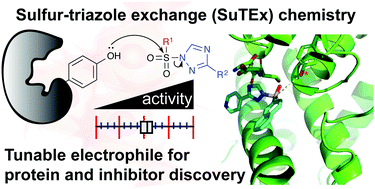
RSC Chem. Biol., 2021,2, 322-337
https://doi.org/10.1039/D0CB00180E
Modified nucleoside triphosphates in bacterial research for in vitro and live-cell applications
Modified nucleoside triphosphates (NTPs) are invaluable tools to probe bacterial enzymatic mechanisms, develop novel genetic material, and engineer drugs and proteins with new functionalities.

RSC Chem. Biol., 2020,1, 333-351
https://doi.org/10.1039/D0CB00078G
Target identification of mouse stem cell probe CDy1 as ALDH2 and Abcb1b through live-cell affinity-matrix and ABC CRISPRa library
CDy1 is a powerful tool to distingusih embryonic stem cells for reprogramming studies and regeneration medicine.

RSC Chem. Biol., 2021,2, 1590-1593
https://doi.org/10.1039/D1CB00147G
A two-step resin based approach to reveal survivin-selective fluorescent probes
A dual-resin system was developed that united confocal-fluorescent imaging for hit identification and microscale NMR for hit isolation and structure elucidation. Using this approach, we identified two natural products that bound to the inhibitor of apoptosis protein, survivin.

RSC Chem. Biol., 2021,2, 181-186
https://doi.org/10.1039/D0CB00122H
Design, synthesis and evaluation of tryptophan analogues as tool compounds to study IDO1 activity
We report the rational design, novel syntheses and biophysical and in silico evaluation of tryptophan-inspired tool compounds to probe the illusive MOA of the clinically-relevant heme-dioxygenase protein, IDO1.
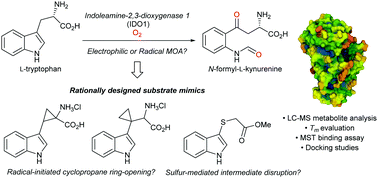
RSC Chem. Biol., 2021,2, 1651-1660
https://doi.org/10.1039/D0CB00209G
Alkyl vs. aryl modifications: a comparative study on modular modifications of triphenylphosphonium mitochondrial vectors
Alkyl chain extension and aryl methylation can be employed to enhance mitochondrial uptake in triphenylphosphonium vectors. Here we compare these complementary strategies and their mitochondrial-targeting effects using a modular synthetic approach.
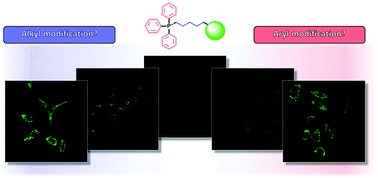
RSC Chem. Biol., 2021,2, 1643-1650
https://doi.org/10.1039/D1CB00099C
Dual concentration-dependent effect of ascorbic acid on PAP(248–286) amyloid formation and SEVI-mediated HIV infection
Human semen contains various amyloidogenic peptides derived from Prostatic Acid Phosphatase (PAP) and Semenogelin proteins that are capable of enhancing HIV-1 infection when assembled into fibrils.
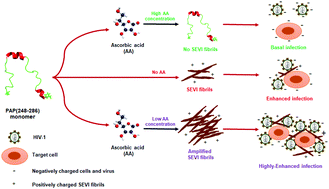
RSC Chem. Biol., 2021,2, 1534-1545
https://doi.org/10.1039/D1CB00084E
Phosphinate esters as novel warheads for activity-based probes targeting serine proteases
Phosphinate electrophiles are developed as activity-based probes for serine proteases. They can be used for gel-based profiling as well as for microscopy-based detection, and their use is here demonstrated on neutrophil serine proteases.
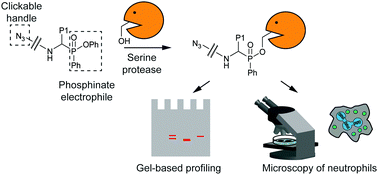
RSC Chem. Biol., 2021,2, 1285-1290
https://doi.org/10.1039/D1CB00117E
Xanthine-based photoaffinity probes allow assessment of ligand engagement by TRPC5 channels
Diazirine-containing photoaffinity probes, based on the potent and selective TRPC1/4/5 channel inhibitor Pico145, allowed the development of an assay to probe cellular interactions between TRPC5 protein and xanthine-based TRPC5 channel modulators.
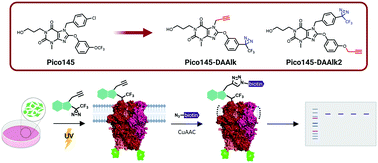
RSC Chem. Biol., 2020,1, 436-448
https://doi.org/10.1039/D0CB00126K
Structural and biophysical insights into the mode of covalent binding of rationally designed potent BMX inhibitors
We identified potent, functionalisable BMX inhibitors and revealed their covalent mode of binding to BMX by X-ray crystallography.
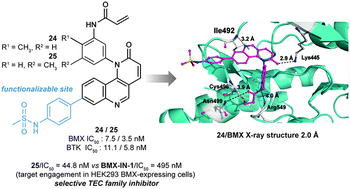
RSC Chem. Biol., 2020,1, 251-262
https://doi.org/10.1039/D0CB00033G
Fluorescent small-molecule agonists as follicle-stimulating hormone receptor imaging tools
Discovery of a potent, small-molecule, fluorescent agonist of the follicle-stimulating hormone receptor (FSHR) for selective staining of FSHR-expressing cells.

RSC Chem. Biol., 2020,1, 263-272
https://doi.org/10.1039/D0CB00068J
Macrocyclic peptides that inhibit Wnt signalling via interaction with Wnt3a
Discovery and optimization of de novo macrocyclic peptide binders of Wnt3a through RaPID screening against an afamin-stabilized Wnt3a complex, capable of inhibiting Wnt signalling by direct interaction to the Wnt protein.

RSC Chem. Biol., 2020,1, 26-34
https://doi.org/10.1039/D0CB00016G
A mechanism-inspired UDP-N-acetylglucosamine pyrophosphorylase inhibitor
UDP-N-acetylglucosamine pyrophosphorylase (UAP1) catalyses the last step in eukaryotic biosynthesis of uridine diphosphate-N-acetylglucosamine (UDP-GlcNAc), converting UTP and GlcNAc-1P to the sugar nucleotide.
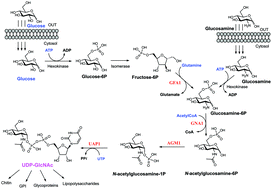
RSC Chem. Biol., 2020,1, 13-25
https://doi.org/10.1039/C9CB00017H
About this collection
The use of small molecules in chemical biology encompasses a wide range of multidisciplinary research, including the use of chemical tools as probes for imaging and target identification, small molecule inhibitors of protein-protein interactions, signal inhibition and the assessment of ligand engagement among others. Small molecule research can compliment and contribute to the development of pharmaceuticals and other approaches to tackling disease.
This collection is intended to highlight the importance of multidisciplinary research at the chemistry-biology interface. Much of this exciting and ground-breaking research using small molecules has been published in RSC Chemical Biology and is collected here for you to explore.
New articles on the topic will be added periodically.